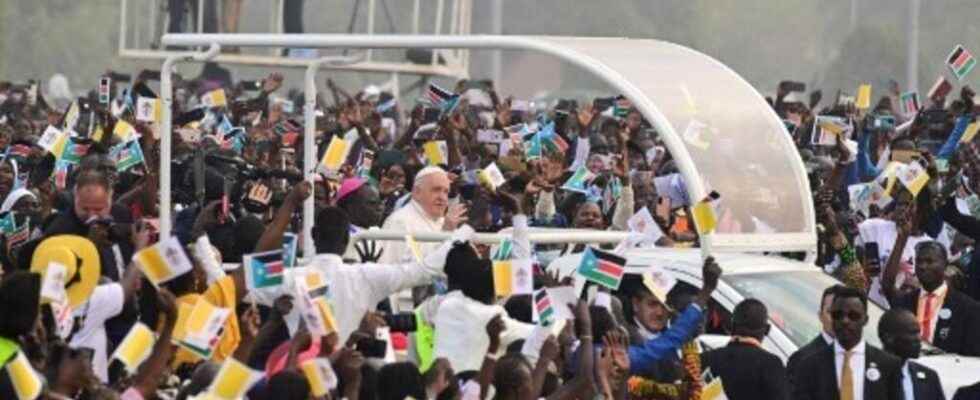Pope Francis ended his visit to South Sudan on Sunday, February 5. The Pope took off from Juba International Airport at 11:57 a.m. (local time) after celebrating Mass at the John Garang Mausoleum.
With our special correspondent in Juba, Florence Miettaux
This ” pilgrimage for peace began Friday, February 3, with Archbishop of Canterbury Justin Welby and Church of Scotland Moderator Iain Greenshields joining the Pope in encouraging conflict resolution in the younger country in the world.
Having become independent in 2011, South Sudan had sunk into civil war in 2013, a conflict from which the country is struggling to emerge despite the 2018 peace agreement.
One night there
To attend the celebration of the mass at the mausoleum of John Garang, in Juba, tens of thousands of faithful spent the night there. Pope Francis greeted them in a popemobile ride and then delivered his homily. He reiterated his call on South Sudanese to reject violence.
” We are called to bear witness to the covenant with God in joy, with gratitude, by showing that we are people capable of creating bonds of friendship, of living fraternity, to prevent the corruption of evil, disease divisions, the plague of injustice. »
In his conclusion, he invites the South Sudanese to reconcile: “ Dear friends, I wish you to be radiant Christian communities that show that it is beautiful and possible to have hope, to build a reconciled future together. »
” This message gives me hope »
Among the tens of thousands of faithful present, Sister Rita Nyawijwok Albino attended the mass: “ The most important message I took away was the encouragement to make peace. I was born during the war. Now I’m old and I don’t know if peace will come before I die. I will make peace with myself and with others, this message gives me hope “.
First consequence of the pope’s visit to Juba: the announcement, on Friday, by the presidency, of a resumption of talks with the opposition groups not signatories of the 2018 peace agreement.
Read also: In South Sudan, the pope invites the leaders to embark on the “tortuous path” of peace
